
Butter is a basic ingredient that goes into everything from cakes to candied toppings. Such an important ingredient is worth the extra consideration. The U.S. government takes butter seriously. Congress passed a law in 1923 that defined what can and cannot carry the butter name. The U.S. Department of Agriculture went further to develop a grading system for the quality of butter. The best butter for baking is, of course, of the highest quality or grade.
Butter Grades
The grading system for butter identifies the butter that meet the highest standards for butter being made in the U.S. The butter is graded on its color, taste, texture, scent and spreadability. The USDA tests the butter at room temperature to also look for defects, such as lumps, sticky texture, brittle parts, air bubbles and density issues. The best quality butter gets a grade of AA. There are only two other grades, A and B. AA butter is the only grade you're likely to find in the supermarket. Grade B butter is usually reserved for manufacturing. Grade AA butter is the best choice for baking.
Other Qualities
Grade AA unsalted butter is the best for baking, and for a few reasons. Butter is naturally sweet, but the addition of salt can mask most of that sweetness and also the creamy flavor of natural butter. Using unsalted butter allows the natural flavor to meld with the other ingredients in baked goods to get that famous "buttery" flavor. Baking recipes are usually created with unsalted butter in mind, so using it will give you good results without having to make adjustments. When you use salted butter, you'll need to use less salt to avoid a salty final product. It's easy to forget to do this.
Best for Pie
You can't stop at just grade AA unsalted butter, because temperature matters. Pie crusts require butter, unsalted is best, but butter off the counter won't work. It must be cold and stiff to be incorporated into the pie crust. The dough will look like it is streaked with yellow. This is where quality counts. The AA grade butter is smooth enough to easily blend with the rest of the pie crust ingredients without causing it to be too brittle or clumpy. When the crust bakes, the grade AA melts evenly without leaving lumps behind. The results are crispy pockets, known as layers. These flaky layers are a sign of a good pie crust.
Best for Cookies
Cookie baking is another area where having plain, grade AA unsalted butter is not enough. To get cookies that are chewy on the inside and crisp on the outside, you must use warm butter. The butter needs to be slightly softened before being incorporated into the cookie dough. Butter that is too soft can upset the wet-dry ingredient balance and ruin the resulting cookies. Low quality can also ruin the cookie dough. It can be too dense to incorporate into the dough or so thin that the butter does not help maintain the structure of the cookie. Use grade AA butter to ensure the finished cookie has the best flavor and texture possible.
Quality Concerns
Even grade AA butter can deteriorate if it isn't properly stored. For example, butter oxidizes when left out in room temperature, in the open air. The oxidation damages the texture and flavor of the butter, making it unsuitable for baking. Freezing butter also changes the texture. The freezing also adds moisture, which compromises the butter's flavor and the way it performs while baking. To store butter properly, place it in an airtight container. Leave the container in the refrigerator until you need it. Throw out unsalted butter after three months. Salted butter needs to be thrown away after five months.
Related Articles

How to Store Butter
How Long Can You Keep Butter ...
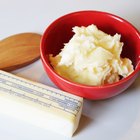
How to Cream Butter Without a Mixer
How Long Can Unsalted Butter Go ...
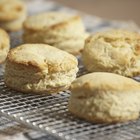
Butter Substitute for Baking Scones

What Can I Substitute for Butter When ...

What Can I Substitute for Butter When ...

Softened vs. Melted Butter When Baking
How to Use Unsweetened Applesauce in ...
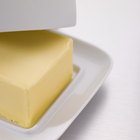
Butter Substitute for Molten Lava Cake
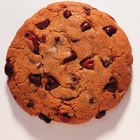
Is Butter or Shortening Better for Soft ...

Butter Substitute for Baking Scones

Adding Cold Water to Whipped Butter

Is Homemade Butter Better Than ...
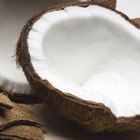
What Is the Difference Between Coconut ...

Substitutes for Butter When Baking ...
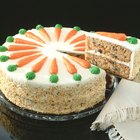
What Are Good Substitutes for Vegetable ...

Can You Substitute Margarine for Butter ...

How to Add Meringue Powder to ...

Softened vs. Melted Butter When Baking
References
Writer Bio
Jonita Davis is freelance writer and marketing consultant. Her work has appeared in various print and online publications, including "The LaPorte County Herald Argus" and Work.com. Davis also authored the book, "Michigan City Marinas," which covers the history of the Michigan City Port Authority. Davis holds a bachelor's degree in English from Purdue University.
Photo Credits
Steve Baccon/Photodisc/Getty Images